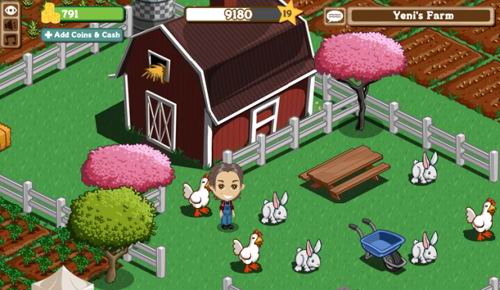科技博客主阐述社交游戏泡沫化现象成因及应对措施
游戏邦注:本文作者为TechEurope博客撰稿人Nicholas Lovell,他今年初刚在《华尔街日报》发表文章阐述为何社交游戏不是泡沫,然而2个月后,他改变了自己的看法,认为社交游戏就是泡沫经济,本文将陈述其最新观点。
首先先从游戏之外谈起。本周有新闻报道,Color Labs,一家既没开始创收,也没在iPhone上推出应用的公司竟在Series A融资中,从红杉资本(Sequoia Capital)那获得了4100万美元的资金,这完全与游戏泡沫之说一拍即合。
从身边的游戏世界来看,《愤怒的小鸟》开发商Rovio从Accel,Felicis和Atomico筹得了4200万美元。虽然Rovio不缺资金,仅凭《愤怒的小鸟》就建立起自己的地位,但这对其来说着实是一笔不小的数目。游戏邦发现,该公司的游戏成功率只有2%。(《愤怒的小鸟》是Rovio推出的第52款游戏,游戏证明了Rovio的顽强生命力,同时也表明如今要在拥挤的手机游戏领域占有一席之地将日益艰难。)
Nicholas Lovell一位来自硅谷的朋友表示,社交游戏领域已经达到白热化状态。虽然还没出现社交游戏初创公司估价惊人的局面,但这是迟早的事。
社交游戏为何泡沫化
风险投资者本·霍罗威茨(Ben Horowitz)表示,游戏领域还未处在泡沫阶段。他表示,在互联网泡沫时代,美国网景公司(Netscape)仅凭5000万的用户就占有90%的浏览器市场。如今仅Facebook就拥有5亿的用户,且整个总目标市场用户已经快要接近20亿了。
金融家和企业家未来加入发展迅速、前景广阔的社交游戏市场是出现泡沫估价的先决条件。游戏邦认为,如果增长率和市场用户与预期相符,行业将得以蓬勃发展;如果出现步伐缓慢,难以满足期望的局面,那我们就进入了泡沫时代。
社交游戏可能会出现几大发展趋势。投资者希望瞄准30-60岁之间的用户及女性群体,让他们在社交游戏花费更多的时间和金钱。他们认为智能手机用户未来将快速增加,用户会继续为各种免费游戏掏钱。他们认为,硬核玩家群体将出现转移,至少是部分转移,转向在线游戏、社交网络游戏及智能手机游戏。
所有这些设想都是合理的。而唯一的风险在于变化的速度能否符合预期。资金雄厚的初创公司将会竞争更小的市场,争相提高顾客获取成本,抢占市场,而不再关注利润率。投资者会继续投资完全是宏观趋势所致,但竞争的加剧意味着很少有公司能够获得行业先驱那般的高额利润。游戏邦认为成功的关键在于把握时机,而非业务是否具有持久性、是否有利可图。
这就是所谓的泡沫。
应对策略
如果陷入社交游戏的泡沫阶段,我们该如何应对呢?
投资者应该瞄准那些和付费用户建立长久关系的公司,而不要光凭运气投机。具体来说,就是瞄准那些有办法在用户获取成本日益上升的情况下获益,而不是因此遭殃的公司。
企业家应该深入行业,接受用户获取成本提高的现实,致力于留住现有用户,让他们从游戏中获得价值。游戏邦认为,企业家要确保玩家可以免费玩游戏,可以轻易就花掉1英镑,同时会愿意掏出100英镑。如果公司想要收买用户,那么就要确保能从用户身上获得投资回报。(本文为游戏邦/gamerboom.com编译,转载请注明来源:游戏邦)
I Have Changed My Mind, We Are In a Bubble
Earlier this year, I wrote an opinion piece in The Wall Street Journal arguing Why Social Gaming is no Bubble.
Two months on, I’ve changed my mind.
Let’s start by looking outside games. The news this week that Color Labs, a company that is not only pre-revenue but that hadn’t even launched its iPhone app, had raised $41 million in Series A funding led by Sequoia Capital has tipped the consensus towards the emergence of a bubble.
Closer to my world of games, Angry Birds developer Rovio raised $42 million from Accel, Felicis and Atomico. That’s an eye-watering amount of money for a company that didn’t need the cash, that is built on a single franchise and that has a 2% hit rate. (Angry Birds was Rovio’s 52nd game, which is powerful testament to their persistence, but also a warning about how difficult it is to create a breakout game in the crowded mobile market.)
In social games, my friends in Silicon Valley tell me that the sector is red hot at the moment. We haven’t seen the eye-watering valuations for pre-revenue companies in social games yet, but it’s only a matter of time.
What makes this a bubble?
Ben Horowitz argues that we are not yet in a bubble. He points out that in the dot com boom, Netscape had a 90% share of the browser market with only 50 million users. Today Facebook alone has 500 million users and the total addressable market is nearer to 2 billion users.
The ability of financiers and entrepreneurs to project forward into a vast and growing market is a pre-requisite for a bubble in valuations. If growth rates and market take-up match projections, we have a boom; if they lag, or prove hard to satisfy than expected, we have a bubble.
Within social games, we are seeing an assumption that several trends will occur or continue. Investors expect the casual gamer, mainly 30-60 year olds and skewed towards women, to play more and spend more on social games. They assume that penetration of smartphones will continue rapidly, and that users will continue spending on freemium games. They assume that the core market will transition, at least partially, to playing games online, on social networks and on smartphones.
All of the assumptions are reasonable. The risk is that the pace of change does not match expectations. New, well-funded companies will fight for a smaller market than anticipated, driving up customer acquisition costs and leading to a landgrab for market share, not a focus on profitability. Investors will keep investing because the macro trends justify it, but intensifying competition mean few companies will achieve the high margins of the first movers. Success will be measured by whether you got out in time, not whether you made a sustainable, profitable business.
That’s a bubble.
What to do about it?
If we are in a bubble for social games, what should we do about it?
If you are an investor, look for companies whose success is predicated on building long-term relationships with paying customers, not hoping for a lucky break. Separately, look for companies who will benefit from rising customer acquisition costs, not suffer from them.
If you are an entrepreneur, get in there. Accept that customer acquisition costs are rising and focus on retaining your customers and offering them great value from your games. Focus on ensuring that your users can play your games for free, can easily spend £1 and can possibly spend £100. If you are going to have to buy users (and you will) make sure that they are profitable for you.
Now excuse me, I’m off to raise some money for my database of games-making freelancers.(Source:TechEurope)








































 闽公网安备35020302001549号
闽公网安备35020302001549号